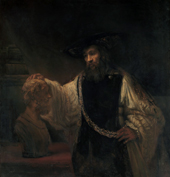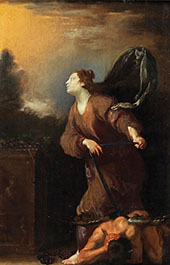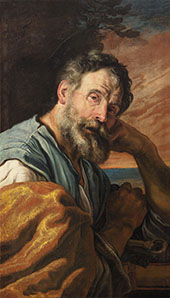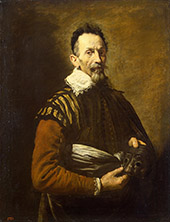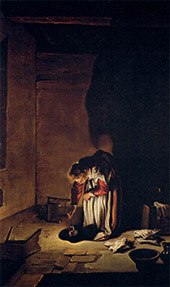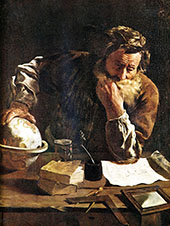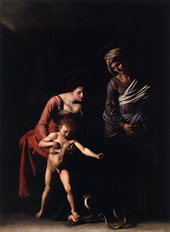Old Masters Oil Paintings Reproductions
Find Old Masters oil painting replicas by Old Masters artists
Old Masters Paintings: A Brief Introduction
Old Masters paintings is a term significantly used in the art world. The term denotes paintings of extreme skill, quality, and beauty. The Old Masters define centuries of fine Western art. From Religious art to secular masterpieces and angelic forms, they have inspired generations of oil paintings ever since.
But who exactly are the “old masters,” and what are some of the most famous Old Master Paintings? This brief introduction explores the definition of old master art and its astoundingly skillful creations.
What does “Old Master” mean?
The term “old master” refers to oil painting art created by distinguished painters working in the late 15th and 17th centuries. Evidence for the term's origin is scarce, but it appears in a diary entry of John Evelyn, the prestigious Royal Society's writer, and founder. In 1696, he described “pictures” of the “old and best masters,” including the work of Michelangelo. He also wrote a large book of the “best drawings of the old masters.” In technical terms, the label “master” applies explicitly to fully trained artists working as master craftsmen of their artistic guilds.
Still used today, the title denotes the highest professional mark of distinction. It shows the professional development of artists on their journey from apprentices to journeymen and master artisans. Historically, most paid a substantial sum and sent a “masterpiece” before acceptance into their guild.
While these masters worked independently, they often employed pupils and entire workshops to help with the production of oil paintings. Therefore, the old master attribution is a particularly fascinating and complex field of academic study.
Who was the last of the Old Masters?
The exact dating of old master painters is a subject of intense scholarly debate. Indeed, while many suggest a cut-off around 1800, others include painters such as Francisco de Goya, who still painted in 1828, the English landscape painter John Constable, who died in 1837, and Eugene Delacroix 1798-1868.
For this reason, Delacroix could be the last “old master” and the first “new master.” Indeed, his iconic oil paintings show the high point of four centuries of European painterly tradition. He worked on classically inspired scenes in the rich tradition of Giorgione, Titian, and Botticelli with paintings such as Odalisque and Death of Sardanapalus.
Nonetheless, paintings by Eugene Delacroix demonstrate energy and, at times, politicized subject matter, as exemplified by Liberty Leading the People. These oil paintings also paved the way for the later creative explosions of Impressionism and Post-Impressionism.
What is the #1 Most Famous Painting?
If just one of the old master paintings is the most famous in the world, it must be Leonardo da Vinci’s Mona Lisa painting. A portrait painting of Lisa Gherardini, the wife of Francesco del Giocondo, it is still unsurpassed for its enigmatic beauty and skill. Indeed, Mona Lisa’s smile is still one of the most debated, copied, and parodied aspects of oil paintings. As well as the statuesque beauty of the sitter, Da Vinci’s expert use of “sfumato” (referring to the technique of softly blending paint) is exemplary.
On display in the Louvre Gallery in Paris, The Mona Lisa painting attracts over 6 million tourists yearly. Given the painting’s enormous position in the cultural imagination, many visitors are surprised by its small dimensions. This most famous of all paintings measures just 77 by 53 centimeters. Nonetheless, it’s also one of the most expensive paintings ever, valued at over $870 million.
The Mona Lisa oil painting is one of our popular fine art reproductions.
In an intriguing art historical link, another Leonardo da Vinci painting. The Salvator Mundi set a world auction price for an old master painting. In 2017, it sold at Christie’s for a record-breaking $450,312,500. The sale price more than doubled the earlier high, set in 2015 by Picasso's painting Women of Algiers. Da Vinci’s Salvator Mundi previously disappeared from public view on multiple occasions to add an extra layer of mystery. It only resurfaced in 2005 when a buyer bought the work at an American estate clearance sale.
Who is the Great Master of Painting?
Aside from Leonardo da Vinci, the great old masters include Fra Angelico, Sandro Botticelli, Raphael, and Michelangelo. But ultimately, there is no single “great master” of painting but a fascinating progression of styles, artistic development, and dazzling creativity. Masters of Renaissance oil paintings paved the way for the tradition of the Venetian School and the Mannerist art movement with artists such as Giorgione, Titian, and Tintoretto. They, in turn, gave away to Baroque old masters, including the legendary Caravaggio, Artemisia Gentileschi, one of the few female, old master artists, and the French painter Nicolas Poussin.
Spanish artists such as Diego Velazquez and El Greco developed classically Baroque-inspired old master paintings to create astoundingly detailed and emotionally charged religious and secular paintings. In the latter part of this period, Baroque gave way to Rococo art, which prioritized ornamental detailing and beautiful contemporary scenes, exemplified by the oil paintings of Jean-Antoine Watteau.
The end of the old master era came with the evolution of NeoClassicicism art styles with paintings by Jacques-Louis David and Jean Auguste Dominique Ingres. This new classicism returned to the carefully controlled compositions of the “original” old masters such as Raphael.
Who are the old Dutch masters?
While the term “old master” most often refers to painters of the Italian Renaissance, there are many old master artists hailing from northern Europe. The Netherlands was a particular center of artistic excellence during the seventeenth century. Known as the Dutch Golden Age, it witnessed an explosion of wealth, trade, and creativity.
Dutch old masters include painters such as Johannes Vermeer, Rembrandt van Rijn, Frans Hals, Peter Paul Rubens, and Pieter Claesz. While Claesz is less well-known today, his Still Life paintings significantly developed Dutch art's “memento mori” theme. Paintings such as Still Life with a Skull and a Writing Quill are unparalleled in their anatomical attention to detail. They also transformed still life from a previously unremarkable painting style into a fashionable and highly desirable form of oil painting.
Despite Claesz’s importance, paintings by Vermeer remain particularly recognizable. One needs only mention Vermeer's Girl with the Pearl Earring 1655 to conjure imagery from films, television, fashion, and even Banksy graffiti.
Famous paintings by Rembrandt include atmospheric works such as Christ in the Storm on the Sea of Galilee 1663 and his legendary group portraits such as The Night Watch. Rembrandt was particularly skillful in religious paintings and famed for his ability to depict intense emotion with moments of tense drama.
What is an Old Master Painting?
There are no set rules for exactly what constitutes old master paintings. It is a subjective and vague art history term. Nonetheless, paintings by true “master” artists such as Da Vinci, Botticelli, Raphael, and Caravaggio are all undisputedly considered Old Masters. While some scholars include art from the Romantic movement, this is a more controversial definition of old master paintings. The term can also refer to prints and drawings, but “old master” art most often refers to oil paintings and frescoes.
Famous Angel Paintings like Madonna and Child with Angels by Botticelli and traditional religious paintings such as Holy Family with St Anne and The Infant St John by Agnolo Bronzino are included in this definition. Depictions of the Virgin Mary and the holy family are today's most highly sought-after old master oil painting reproductions. As the term became popular during the 18th century, it categorized opinions of European art academies on what “good” art meant. Consequently, the idea of the true “old masters” was born. Indeed, copying these paintings was a fundamental part of artistic training. Students could only progress towards drawing from “real life” once they’d mastered old master techniques.
It’s important to note that this definition differs from modern everyday usage of the term. These days, paintings by artists such as Monet, Cezanne, Van Gogh, and Picasso might qualify as “old masters.” Nonetheless, the phrase suggests the highest painterly skill and quality levels in either context.
Old Master Art: Famous Painting Reproductions
Explore our extensive collection of famous oil paintings and the unparalleled beauty of old master oil paintings. Buy iconic paintings from artists Johannes Vermeer to Rembrandt and Renaissance oil paintings by Leonardo da Vinci and Sandro Botticelli.
Discover famous painting reproductions from some of the most popular artists in our extensive online art catalog.
Testimonial from Adrien VdB, Belgium
Cannot Find What You Are Looking For?
Reproduction Gallery Information
Customer Service
(Send Us A Message)
Tel: (503) 937 2010
Fax: (503) 937 2011




